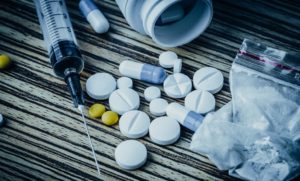Drug Abuse Meeting Kit

DRUG ABUSE SAFETY TALK
The use of opioids and marijuana included with the usual variety of street drugs is a major problem around the world. Drug use including prescription drug abuse causes a myriad of problems. At work, there is a decrease of productivity and safety depending on the kind of drug, the individual and the level of abuse.
THE EFFECT OF DRUGS IN THE WORKPLACE
Employees who abuse alcohol and drugs (including illegal drugs, prescription drugs, and over-the-counter drugs), either on their own time or at work, can pose significant problems for their employers, managers, and co-workers.
These problems can include:
- diminished job performance
- lowered productivity
- absenteeism
- tardiness/sleeping on the job
- high employee turnover
- increased medical and workers’ compensation bills
- potential workplace violence issues
- hangover/withdrawal
- Poor decision making
- Trouble with co-workers
- Theft
- Loss of focus
Employees who abuse drugs and alcohol can also make a workplace more volatile and dangerous, exposing employers to legal liability and other legal issues.
Due to the impairment that drugs can have on a person, it is important to report any odd or suspicious behavior to a supervisor. The supervisor will work with HR or another higher level of management to monitor the individual and take further steps if needed.
SIGNS OF WORKPLACE DRUG ABUSE AND ADDICTION
Most addiction sufferers hide their drug use from employers and coworkers, but there are some signs that suggest a problem. Irrationally blame them for personal mistakes. Other indicators someone is abusing drugs in the workplace may include:
- Openly talking about money problems
- A decline in personal appearance or hygiene
- Complaints of failing relationships at home
- Taking time off for vague illnesses or family problems
WORKPLACE SAFETY GUARDRAIL
Written Drug and Alcohol Testing Policy
- Check Your Policy
You must have a Written Drug and Alcohol Testing Policy. It should include drug and alcohol testing for reasonable suspicion. A general policy statement is not enough to permit testing; if your policy does not include testing for reasonable suspicion, you may want to consult a workplace consulting firm or your legal counsel to help you implement one.
- Document
Suspicions regarding an employee who may be under the influence may come from co-workers or clients, often before it is noticed by a supervisor. Document any complaints, concerns, behavior patterns or witnesses to the behavior.
- Observe
It is important that management also observe the behavior. A second management person should also observe the behavior. Both observers need to document their observations in detail, such as; odors, speech, eyes being dilated or constricted, emotional issues such as agitation or irritability, drowsiness, excessive sweating, and other telltale signs.
- Meet
Once the situation is documented and everyone is in agreement, only then should you meet with the employee for a discussion of what has been observed. And always have a second party at the meeting to act as a witness. You then have the options to follow whatever is stated in your company policy.
- Test
Drug testing is a legal issue and may depend on your company policy and legal advisors. If your policy allows for it, contact your drug test facility to notify it that you have an employee on the way for reasonable suspicion testing.
If you send the employee for drug or alcohol testing always explain that in order to rule out the possibility that the employee is in violation of the company’s drug and alcohol policy, you will be sending them for a drug and/or alcohol test. If you have not obtained a drug testing consent previously, you should have a consent form available at this meeting for the employee’s signature.
If they refuse the test refer to your drug and alcohol policy, especially if your policy states that refusing the test will be treated as a positive drug test result or will result in immediate termination of employment.
- Act on the Results
If the drug or alcohol test results are negative, contact the employee and return them to their prior job as soon as possible. If it is positive, you have the option of sending them for counseling or treatment and returning to work.
Takeaways
It’s wise to use people who are professionally trained in drug-and-alcohol-at-work issues, non-physical crisis intervention, verbal de-escalation, nonviolent confrontation management, and employee protection techniques, as well as assistance and training for management and supervisory personnel.
FINAL WORD
When an individual comes to work under the influence of drugs it is a huge safety concern for everyone on that jobsite. Upgrades to equipment, pay raises, bonuses, and better benefits could be out of the question at some companies due to drug abuse. Speak up when you think one of your coworkers is suffering from a drug abuse problem.